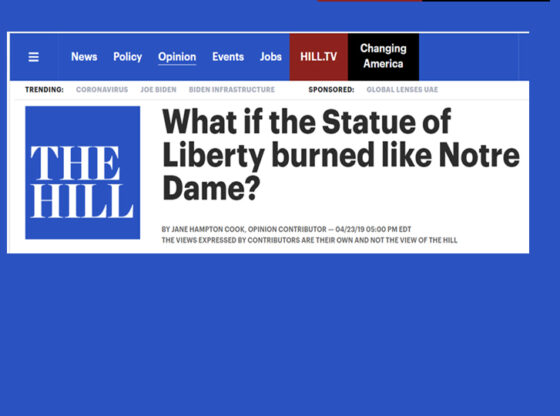The Cathedral of Notre Dame symbolizes France’s national identity. “Notre-Dame de Paris is Paris…” It’s our roots, our history, our civilization,” Karine Berger of the Paris Centre Pompidou Museum, told the “New York Times” after a fire severely gutted the cathedral on April 15, 2019.
The likely accidental fire was heartbreaking in part because Notre Dame has survived more than 800 years of French history.
“The iconic Notre Dame cathedral saw Napoleon crowned Emperor. It lived through Joan of Arc’s burning at the stake, witnessed the worst of the Black Plague, barely survived the French Revolution and forget about the Nazis,” Fox News Channel’s Shepard Smith reported of how the icon survived many trials.
Some of France’s yellow jacket protesters, who have been protesting class inequality for weeks, objected. “‘If they can give tens of millions to rebuild Notre Dame, then they should stop telling us there is no money to help with the social emergency,” Philippe Martinez, head of the CGT trade union, said.
If Notre Dame symbolizes France’s national identity, then what landmark represents America’s identity? The U.S. Capitol is known as the temple of liberty, which is filled with symbols of a nation that gave up royalty to embrace representation. The Capitol has outlived two world wars, a Cold War and survived the September 11, 2001, terrorist attacks.
A recent PRRI survey revealed that 91 percent of Americans today are divided over politics. If the Capitol were to burn tomorrow, would our impotent politics prevent us from rebuilding? Would we, like France today, have a political fight on our hands?
Though it’s impossible to say, history shows how we might respond. On August 24, 1814, British soldiers burned the U.S. Capitol and White House during the War of 1812.
As the British formed a line, they were impressed by the three-storied dome-less Capitol. “It was an unfinished but beautifully arranged building,” described Navy Lt. James Scott, the British admiral’s top aide. Inside he found a wonderland of architecture and art, including Corinthian columns carved like cornstalks.
Scott saw the symbolism. The Speaker of the House’s chair was “surmounted by a gilt eagle, with extended wings and ruffled crest, looking towards the skies, emblematical, it is to be presumed, of the rising greatness of the young nation.”
The eagle, a sacred bird to native tribes, symbolizes liberty. In America’s great seal, the eagle holds a scroll “inscribed with this motto, ‘E pluribus Unum,’” or out of many one.
Read the full article as originally published on TheHill.com.


